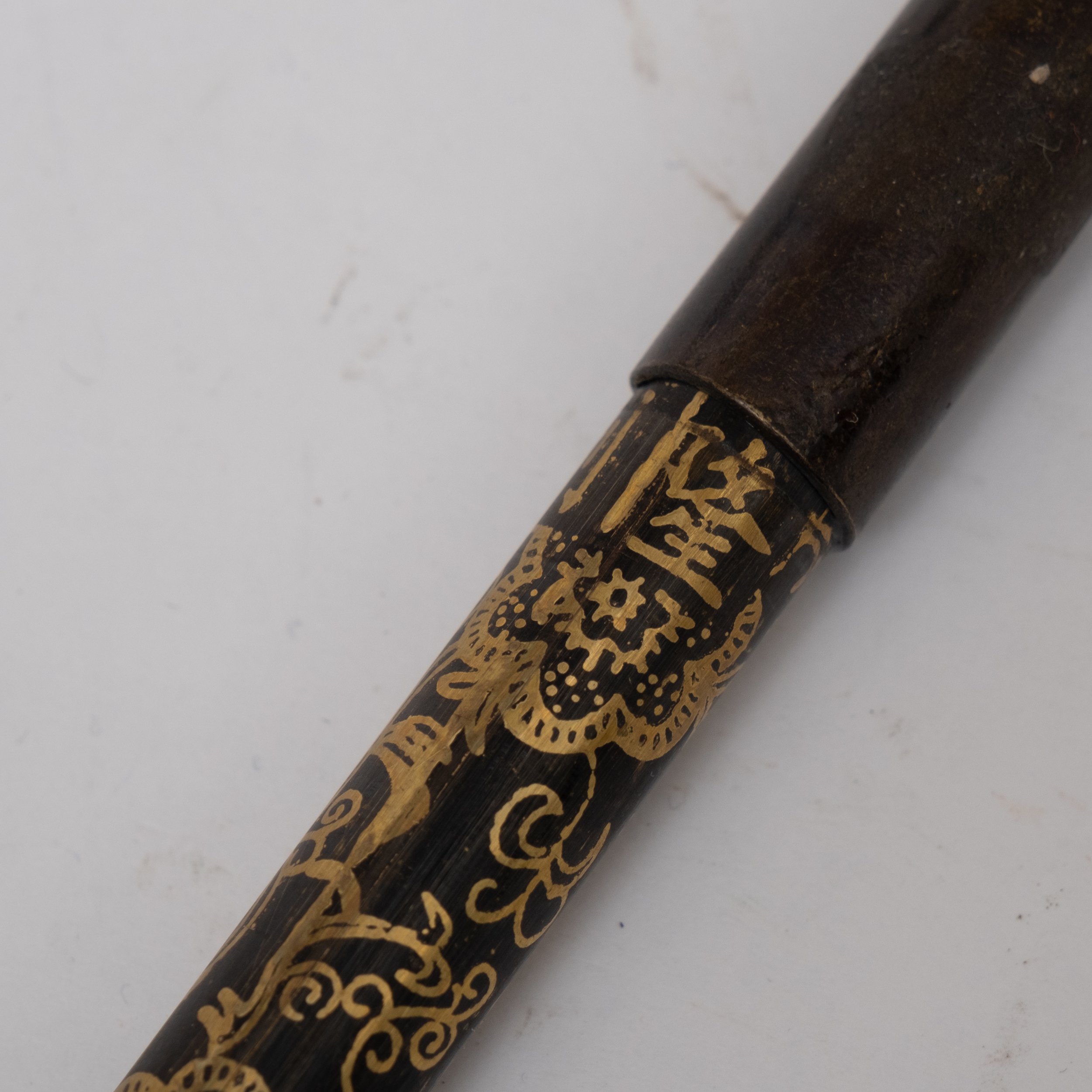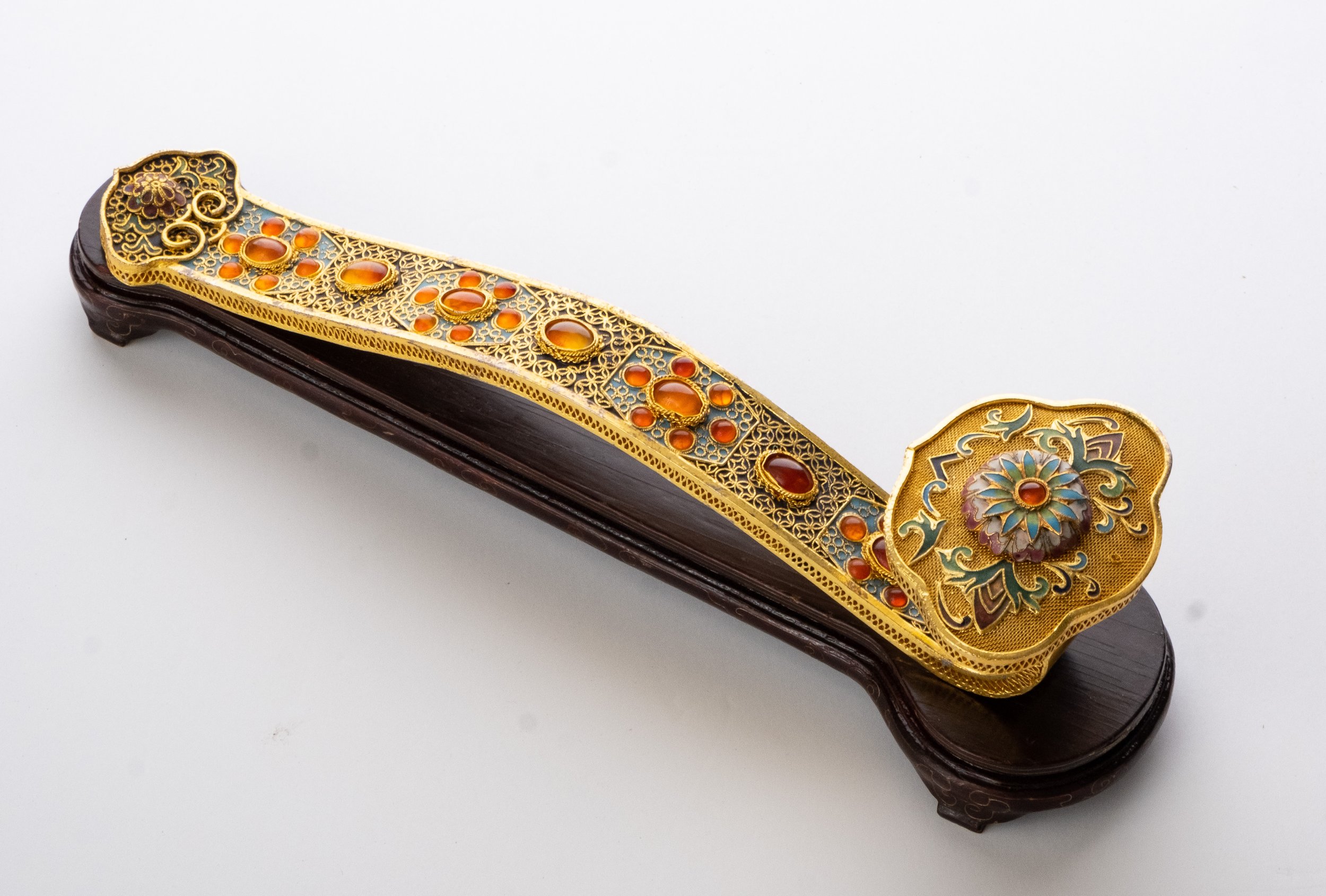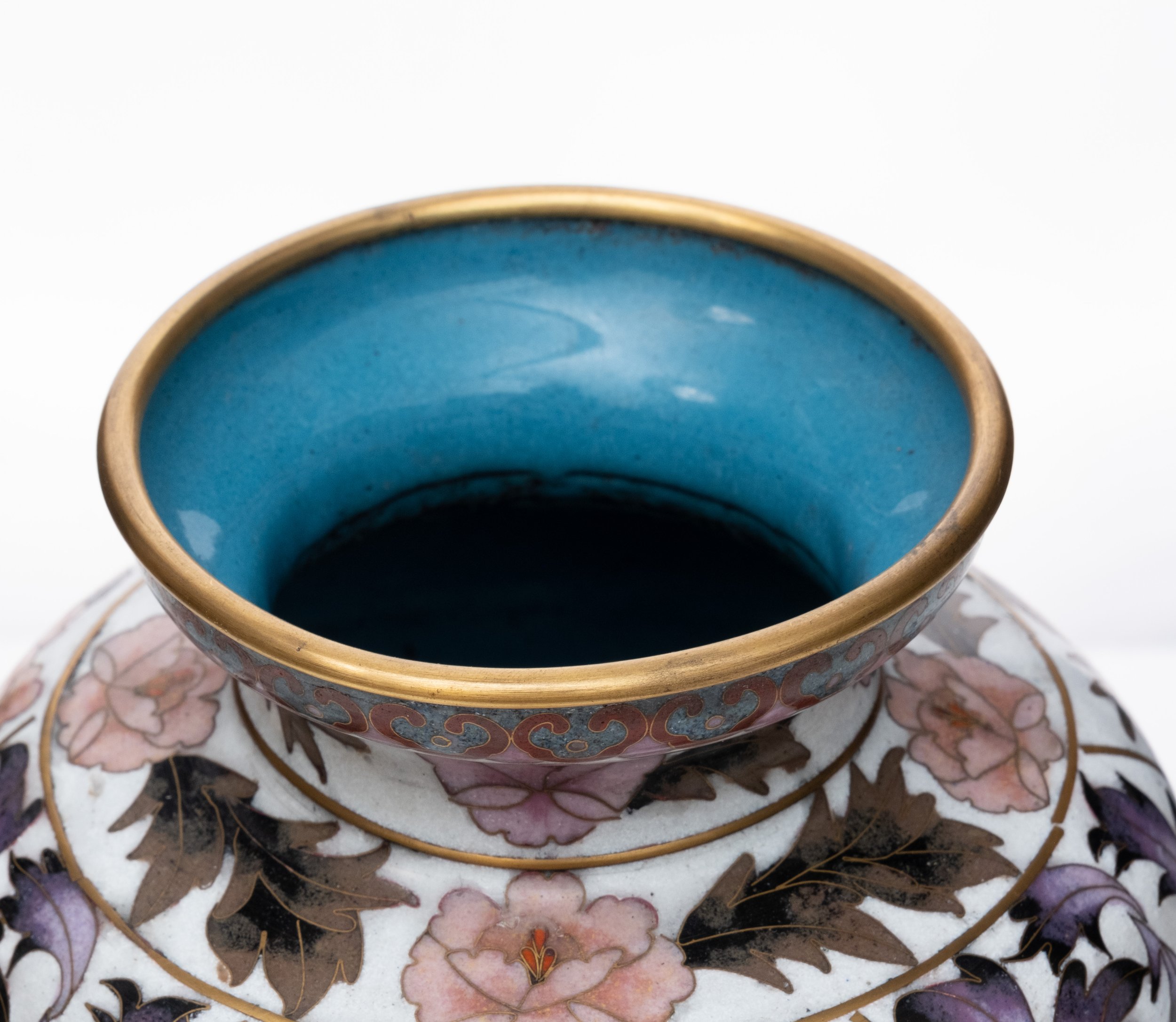 Image 1 of 9
Image 1 of 9

 Image 2 of 9
Image 2 of 9

 Image 3 of 9
Image 3 of 9

 Image 4 of 9
Image 4 of 9

 Image 5 of 9
Image 5 of 9

 Image 6 of 9
Image 6 of 9

 Image 7 of 9
Image 7 of 9

 Image 8 of 9
Image 8 of 9

 Image 9 of 9
Image 9 of 9










Meiji Signed Japanese Telescoping Kiseru Pipe. Late 19th century
Meiji Japanese signed kiseru pipe, showcasing intricate gilt flower depictions among elegant vine patterns throughout the telescoping shaft. This exceptional piece represents the exquisite craftsmanship and artistry of the Meiji period.
A kiseru pipe is a traditional Japanese smoking pipe used for smoking finely shredded tobacco called kizami. The kiseru pipe typically consists of a small metal bowl (for holding the tobacco), a long slender shaft made of metal, bamboo, or wood, and a mouthpiece. Kiseru pipes have been used in Japan since the 16th century and became particularly popular during the Edo period (1603-1868). They were often ornately designed, with intricate patterns and decorative elements, making them not only functional items but also works of art and symbols of status.
1.12"W Closed: 18.25"L, Open: 25.62"L
Meiji Japanese signed kiseru pipe, showcasing intricate gilt flower depictions among elegant vine patterns throughout the telescoping shaft. This exceptional piece represents the exquisite craftsmanship and artistry of the Meiji period.
A kiseru pipe is a traditional Japanese smoking pipe used for smoking finely shredded tobacco called kizami. The kiseru pipe typically consists of a small metal bowl (for holding the tobacco), a long slender shaft made of metal, bamboo, or wood, and a mouthpiece. Kiseru pipes have been used in Japan since the 16th century and became particularly popular during the Edo period (1603-1868). They were often ornately designed, with intricate patterns and decorative elements, making them not only functional items but also works of art and symbols of status.
1.12"W Closed: 18.25"L, Open: 25.62"L
Meiji Japanese signed kiseru pipe, showcasing intricate gilt flower depictions among elegant vine patterns throughout the telescoping shaft. This exceptional piece represents the exquisite craftsmanship and artistry of the Meiji period.
A kiseru pipe is a traditional Japanese smoking pipe used for smoking finely shredded tobacco called kizami. The kiseru pipe typically consists of a small metal bowl (for holding the tobacco), a long slender shaft made of metal, bamboo, or wood, and a mouthpiece. Kiseru pipes have been used in Japan since the 16th century and became particularly popular during the Edo period (1603-1868). They were often ornately designed, with intricate patterns and decorative elements, making them not only functional items but also works of art and symbols of status.
1.12"W Closed: 18.25"L, Open: 25.62"L























